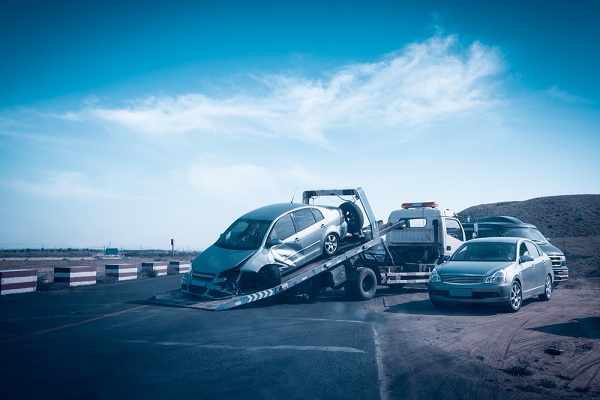Distracted Driving: How Agents and Carriers Play a Key Role in Prevention

By: Olivia Overman
In 2018, 2,841 people were killed and an estimated additional 400,000 people were injured in motor vehicle crashes involving distracted drivers, according to the National Highway Traffic Safety Administration (NHTSA). Of all drivers involved in fatal crashes, 5% were reported as distracted at the time of the crashes while 8% of those were between 15 and 19 years old.
“Distracted driving is a serious problem not just for the insurance industry, but for the nation,” says Bronwyn Koopman, president of Bristol West Insurance Group, a Farmers Insurance Company.
The statistics paint a bleak picture. “Roadway fatalities are on the rise even though vehicles are getting safer. Crashes are high, in part, because more people have smartphones and increasingly use them while driving,” says Terry McClaskey, national personal lines leader, Westfield.
Every day, eight people in the U.S. are killed in crashes reported to involve a distracted driver, with 1 in 4 caused by texting while driving, according to the Centers for Disease Control and Prevention.
“We see that sobering statistic reflected in both accident frequency and bodily injury severity,” says Brook McGuire, product strategy lead, Safeco Insurance. “Because cell phones are ubiquitous, it’s easy to blame them for every accident, but frankly, there is plenty of blame to go around.”
“Distracted driving accidents happen because people take their eyes off the road or their hands off the wheel, but we see the real issue being a cognitive one,” she continues. “Motor vehicles are part of everyday life, and even though they’re safer than ever and they can even warn us if we veer into another lane, they can’t protect us from focusing on a conversation in the car, checking that email or recording the next viral video.”
Manual, visual and cognitive distractions are all part of the epidemic of distracted driving. “Multiple studies show that distracted driving significantly increases the risk of a crash,” McClaskey says. “A study by the Virginia Tech Transportation Institute found that engaging in visual-manual tasks, such as reaching for a phone, dialing and texting with a hand-held or portable device, tripled the risk of a crash.”
While many states have taken steps to restrict distracted behaviors, penalties for distracted driving vary by state. “Laws can and do change the behavior of drivers but until all states enforce penalties, the insurance industry needs to continue raising this as an issue,” McClaskey says.
“Many insurance carriers work with their home states in promoting highway safety,” McClaskey continues. “For example, the Fix Our Roads Ohio coalition is working to make driving while handling any electronic wireless device a primary offense.”
If the legislation is passed, fines would increase for drivers using devices while driving and in cases where a driver using a device causes serious injury or death. The penalties would mirror those of drunk driving.
“The primary way insurers can help is through pricing these risks appropriately through cellphone-based telematics programs,” says Lindsey Haley, vice president of product management, State Auto. “Those drivers that are inappropriately using their phones while driving rightfully deserve higher premiums as they are a much higher risk than those that do not use their mobile devices. Providing feedback to those drivers through the mobile app telematics solution is important to changing driving behaviors.”
Awareness campaigns that remind people to keep their eyes and attention focused on the road are important, but it is the “enhanced vehicle technologies that will continue to play a large part in helping reduce injuries and deaths caused by distracted drivers,” Koopman says.
Agents and carriers need to continue to educate customers about distracted driving, encourage safe behaviors and offer telematics-based safety products, but “ultimately, it will be self-driving vehicles that will reduce human-influenced accidents,” McGuire says. “Until then, the way forward is by working through the insurance lobby to ask states to take a stricter stance on distracted driving.”
“In the end, putting away your phone and technology while behind the wheel is a mindset that everyone needs to acquire,” says Alan Umaly, president, Westwood Insurance Agency.
Olivia Overman is IA content editor.










